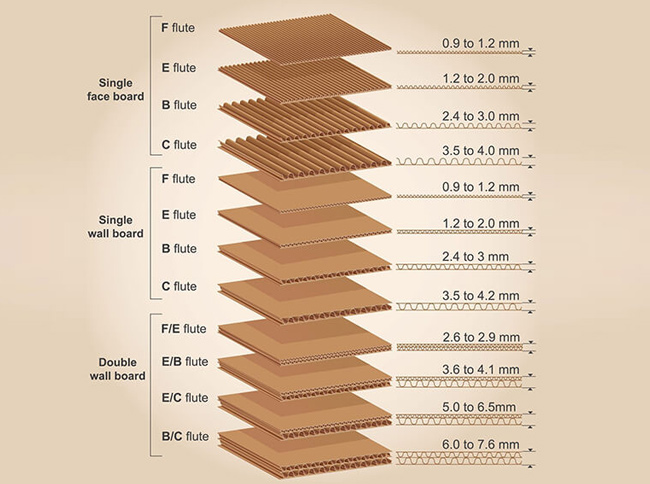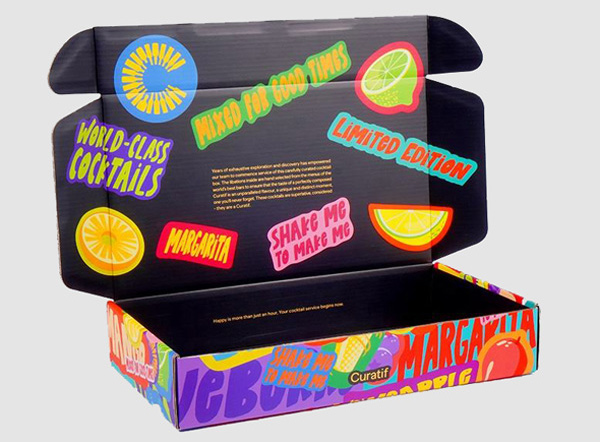By selecting the right corrugated board thickness, you not only ensure product safety but also optimize your supply chain efficiency. You can make informed decisions that balance protection with cost, ensuring your goods reach their destination intact without unnecessary expense.
Corrugated board is integral to packaging, consisting of material layers and a structured production process. It's defined through its durable material composition and unique corrugation process that enhances strength and functionality.
Corrugated board consists of three main layers: the outside liners and the inner fluted layer, also known as the medium. Liners are made from kraft paper, known for its strength and resistance to moisture.
The medium is often crafted from recycled materials, giving the board its characteristic wavy structure, known as fluting. This fluting enhances the board's rigidity and protective qualities. Fluting height varies, affecting cushioning and compression resistance. Different fluting types, such as A, B, C, E, and F, offer various strengths and uses. Choosing appropriate compositions and fluting types is crucial for different packaging needs, ensuring durability during handling and transportation.
The corrugation process transforms flat paperboard into corrugated board by pressing a flat sheet of paper through gears to create the wave-like fluting. The fluted medium is glued between two liners to form corrugated board.
The bonding process utilizes adhesives, typically starch-based, providing environmental benefits. Various machines, like single-facers and double-backers, are used in the corrugation process, ensuring precise fluting and seamless liner adhesion. Temperature and speed control are crucial, impacting the board’s strength and quality. Through careful management of these parameters, manufacturers can produce corrugated boards suited for a wide range of applications, from light packaging to protective shipping cartons.
Corrugated board thickness is influenced primarily by flute types and wall construction. Different flute sizes contribute varying levels of strength, cushioning, and stiffness. Wall construction involves configurations that further enhance or reduce the board's properties. Understanding these elements helps in selecting the right board type for specific packaging needs.
Choose your flute type based on the product requirements. A larger flute leads to greater thickness and better protection, while a smaller flute ensures a smoother surface.

Wall construction defines how many layers of fluting and liners make up the board. It affects both thickness and structural performance.
Your choice in wall construction impacts the board's overall thickness. Double and triple walls increase thickness, offering more durability but less flexibility. Consider usage requirements to select the appropriate wall construction for your packaging demands.
Corrugated board thickness directly influences its versatility in packaging and its strength in load-bearing applications. Evaluating these factors will help you determine the right specifications for your needs.
Corrugated board is widely used in packaging due to its adaptability and protective qualities. Thicker boards offer enhanced protection for fragile items, which is essential for industries like electronics and glassware. Food and beverage sectors rely on medium thickness for their balance of strength and cost-effectiveness.
For customized packaging solutions, you can choose from single-wall, double-wall, or even triple-wall configurations. This flexibility allows tailoring the material to different product weights and sizes, offering more safety during transportation.
Creating packaging solutions that reflect product visibility while ensuring safety can also be achieved by choosing the right corrugated board thickness.

Branded Subscription Boxes of E Flute Corrugated Board
The thickness of corrugated board plays a crucial role in its ability to bear loads. Thicker boards can support heavier weight, which is critical in shipment and warehousing. This is especially important in industries such as automotive and machinery, where durability and strength are top priorities.
Using the right corrugated board thickness ensures the integrity of the product during transport. The board's structure, often characterized by its flute size, directly impacts its capacity to withstand pressure and how well it performs under substantial weight.
Ultimately, understanding load-bearing needs and environmental factors will assist you in selecting the appropriate board thickness for your specific requirements.
With the advancement of science and technology, the application of new materials in the corrugated industry has gradually increased, such as renewable materials and bio-based materials, which has promoted the environmental protection of corrugated products. In addition, more attention is paid to energy saving and waste reduction in the manufacturing process to meet the challenges of sustainable development. Innovation within the industry will further promote the diversification of corrugated thickness and design.
Corrugated thickness plays an important role in all application fields. Through in-depth understanding of corrugated thickness, enterprises can better choose the right materials and improve the protection and economy of products. With the continuous development and innovation of the industry, corrugated products will be more efficient and environmentally friendly in the future, providing better solutions for various industries. All parties in the industry are encouraged to work together to promote the progress and sustainable development of corrugated technology.
Contact: Lisa Lee, Andy Chou
Phone: 0086-13811205110
Tel: 0574-83026853
Email: sales@unicopacking.com
Add: Liangzhu Village, Gaoqiao Town, Haishu District, Ningbo 315016, Zhejiang, China